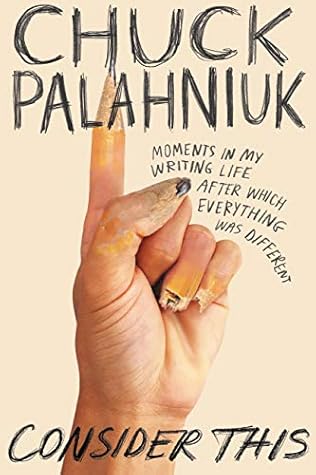More on this book
Community
Kindle Notes & Highlights
Read between
March 23 - May 9, 2022
writers must be smart enough to hatch a brilliant idea—but dull enough to research it, keyboard it, edit and re-edit it, market the manuscript, revise it, revise it, re-revise it, review the copy edit, proofread the typeset galleys, slog through the interviews and write the essays to promote it, and finally to show up in a dozen cities and autograph copies for thousands or tens of thousands of people…
“And another thing,” he cautioned me, “don’t use a lot of commas. People hate sentences with lots of commas. Keep your sentences short. Readers like short sentences.”
Description: A man walks into a bar. Instruction: Walk into a bar. Exclamation (onomatopoeia): Sigh. Most fiction consists of only description, but good storytelling can mix all three forms. For instance, “A man walks into a bar and orders a margarita. Easy enough. Mix three parts tequila and two parts triple sec with one part lime juice, pour it over ice, and—voilà—that’s a margarita.” Using all three forms of communication creates a natural, conversational style. Description combined with occasional instruction, and punctuated with sound effects or exclamations: It’s how people talk.
So much of this book will be about recognizing what good storytellers do intuitively. If you were my student, I’d tell you to shift as needed between the three POVs. Not constantly, but as appropriate to control authority, intimacy, and pace.


